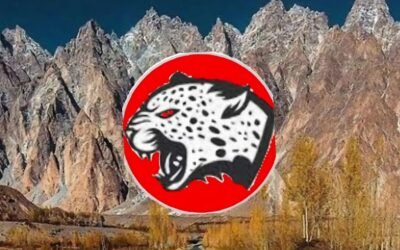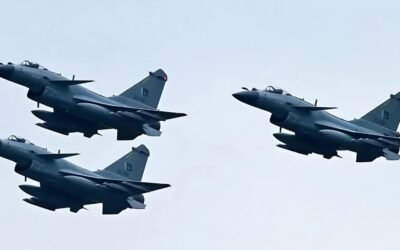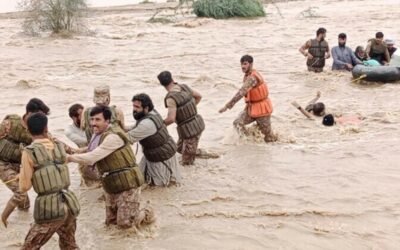To understand the Siachen conflict, it is essential to be introduced to the controversy surrounding point NJ9842. This point is a grid coordinate in the Karachi Sheet of military maps. These were the same maps used during the negotiations between India and Pakistan following the 1971 war. Point NJ9842 marks the northernmost officially demarcated point on the Line of Control (LoC), which falls in the Kashmir region. Its coordinates are approximately 35 degrees North to 77 degrees East. It is located in the south of the Saltoro Ridge and the Siachen Glacier, situated east of the Karakoram Range.
The Siachen Glacier itself could not be demarcated, which has paved the way for considerable ambiguity between the two nations that already have outstanding border disputes. The glacier’s unwelcoming environment and harsh weather have further exacerbated this situation.
Siachen Glacier
The Siachen Glacier is often called the “world’s highest battleground” and rightfully so, as it ranges in altitude from about 18,875 feet at its head at Indira Col to 11,875 feet at its terminus. The glacier stretches approximately 76 km in length, making it the longest in the Karakoram and the second-longest in the world’s non-polar areas. The name “Siachen” originates from the local Balti language, which means “land of roses.” “Sia” means wild rose, and “chen” means abundance. It is one of the country’s most significant sources of water. Its melting waters feed into the Nubra River, which flows into the Shyok River, which in turn flows into the mighty Indus River, sustaining life and agriculture across Pakistan.

Source: Window to Russia
Origins of the Conflict
The late 1950s saw no activity on the glacier, except for foreign mountaineering expeditions to Siachen from the Pakistani side, which did not raise any objections from the Indian side. In 1978, India began sending reconnaissance parties. It initiated planning to occupy the glacier, based on the perception that US tourism maps depicted Siachen as part of Pakistan, and all available information was from the Pakistani side, regarding a foreign expedition. The Indian Army’s Western Command, under Lieutenant General M.L. Chibber, initiated initial plans for Operation Meghdoot, which aimed to capture passes connecting Siachen to Pakistan’s Gilgit-Baltistan to sever the Karakoram Highway. Patrols of the area began under Colonel Narendara Kumar “Bull”.

Source: imrmedia
India’s Justifications for Operation Meghdoot
Before 1984, India had not expressed any official concerns regarding international expeditions to Siachen from the Pakistani side. The reconnaissance party under Col Kumar cited ‘labels from tin cans and cigarette packs that had Pakistani names as well as German and Japanese equipment’, which they claimed as proof of the existence of a Pakistani presence. It is entirely normal for mountaineering teams to leave behind traces of their existence, and therefore debunks Kumar’s claims that the area had any Pakistani military presence. Routine patrolling by the Indian army began in 1979; meanwhile, only mountaineering teams from foreign countries continued from the Pakistani side. From 1981-82, the then Indian PM Indira Gandhi sent teams to Antarctica to study arctic weather and glacial masses. Indira Gandhi justified these studies as a “fulfillment of a lifelong dream,” even though the only other arctic region that came under Indian control was Siachen. Coincidentally, this was the same time around which the Pakistan Army was busy in the war against the Soviet Union in Afghanistan. In 1982, the Pakistan Army detected Indian movement and their illegal buildup of military infrastructure on the glacier, and intelligence reported India’s intention to move further North and Northwest to cut off the Karakoram highway and the entire Gilgit Baltistan. Operation Meghdoot, therefore, was less about reasserting India’s own territory and more about actively encroaching upon Pakistani territory to cut off its link with China through the Karakoram Highway.
View this post on Instagram
Strategic Impact
To date, the formally agreed-upon Line of Control officially ends at point NJ9842. There is no demarcated border beyond it. Whatever areas the Indian army has gained are through the illegal takeover of Pakistani territory without any formal talks or official communication of their apprehensions. India repeatedly asserts that their operation was a pre-emptive strategy to counter Pakistan’s military presence on the glacier, even though there was no evidence of that. This further exacerbated the disputed Kashmir issue and opened a new front between Pakistan and India that could have easily been avoided. This is how they sowed the seeds of conflict and created the “highest battleground on earth”. It seems India is still insecure about their position in Siachen, as maps offended them back then and AI does now:

Source: X/@aravind







